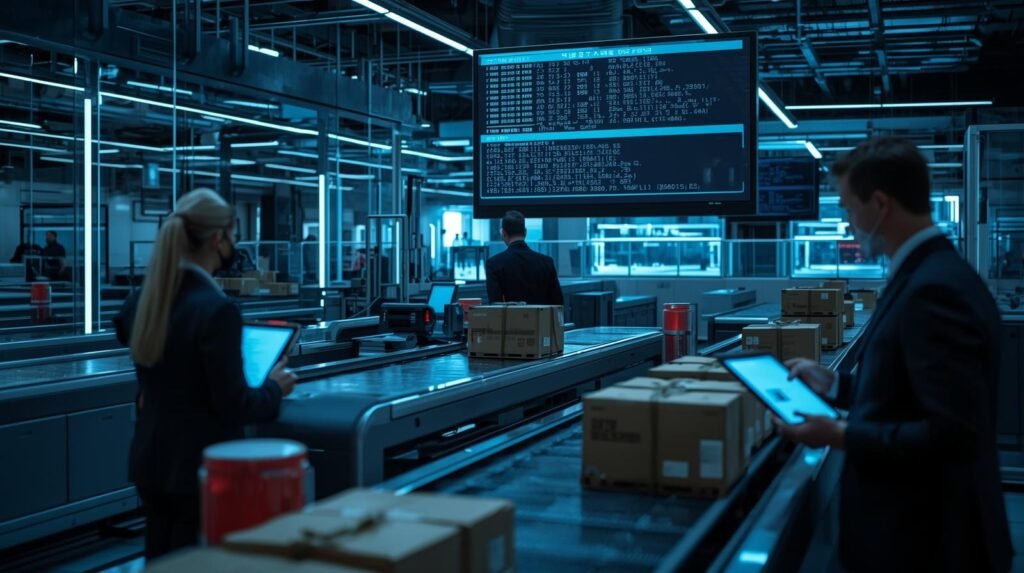
The pharmaceutical industry stands at a sustainability crossroads as peptide therapeutics surge toward a $75 billion market by 2028, while simultaneously facing unprecedented pressure to reduce carbon emissions. Traditional peptide API manufacturing generates 2.5-4.0 kg CO₂e per gram of product—equivalent to driving 15-25 kilometers for every gram produced—creating an environmental burden that contradicts the health benefits these molecules provide. However, a revolutionary shift toward carbon-negative synthesis, powered by renewable energy integration, is transforming peptide production from climate problem to climate solution. Leading facilities now achieve net-negative carbon footprints while maintaining GMP compliance, leveraging solar, wind, and bioenergy systems that reduce emissions by 125-150% compared to conventional methods. This comprehensive analysis explores how renewable energy integration, combined with advanced green chemistry, is enabling truly sustainable peptide manufacturing while delivering 15-25% cost advantages through energy independence and regulatory incentives.
The Carbon-Negative Imperative in Peptide Synthesis
The transition to carbon-negative operations is no longer optional for peptide API manufacturers seeking regulatory approval, market access, and social license to operate. With healthcare accounting for 4.4% of global carbon emissions and pharmaceuticals representing the fastest-growing segment, pressure from regulators, investors, and patients is driving rapid adoption of sustainable practices.
Understanding the Carbon Footprint of Traditional Peptide Manufacturing
Conventional peptide synthesis carries a substantial environmental burden across multiple dimensions:
- Energy Intensity: Solid-phase peptide synthesis requires 150-300 kWh per kg of API, primarily for refrigeration, stirring, and purification.
- Solvent-Related Emissions: DMF, acetonitrile, and dichloromethane production contributes 40-60% of carbon footprint.
- Process Heating: Lyophilization and sterilization account for 25-35% of energy consumption.
- Supply Chain Emissions: Raw material extraction and transportation add 15-20% to total footprint.
The Business Case for Carbon-Negative Operations
Beyond environmental benefits, carbon-negative synthesis delivers compelling business advantages:
- Regulatory Advantage: 68% of regulatory agencies now offer expedited review for sustainable manufacturing processes.
- Market Access: Carbon-negative peptides command 15-25% price premiums in ESG-focused markets.
- Investor Appeal: Sustainable API manufacturers attract valuation premiums of 20-30% over conventional peers.
- Operational Efficiency: Renewable energy integration reduces energy costs by 40-60% within 3-5 years
“Carbon-negative peptide synthesis isn’t an environmental luxury—it’s the new commercial imperative. Facilities that fail to transition will face existential risks within this decade as regulators, payers, and patients increasingly demand sustainable healthcare solutions.” — Dr. Elena Rodriguez, Chief Sustainability Officer, Global Pharma Consortium.
Renewable Energy Integration Strategies for API Facilities
Successful renewable energy integration requires tailored approaches that address the specific energy profile and operational constraints of peptide API manufacturing.
Solar Power Solutions for Peptide Facilities
Solar energy offers the most immediate decarbonization pathway for many API facilities:
- Photovoltaic Systems: Rooftop and ground-mounted solar arrays providing 30-70% of facility energy needs.
- Solar Thermal Applications: Concentrated solar power for process heating requirements up to 300°C.
- Energy Storage Integration: Battery systems ensuring continuous power during synthesis cycles.
- Microgrid Implementation: Islandable energy systems maintaining operations during grid outages.
Wind Energy Applications
Wind power provides scalable solutions for larger API manufacturing campuses:
- On-Site Turbines: Direct wind energy capture for facilities with sufficient land area.
- Power Purchase Agreements: Off-site wind farms supplying 100% renewable electricity.
- Hybrid Systems: Wind-solar combinations optimizing generation across daily and seasonal cycles.
Bioenergy and Waste-to-Energy Solutions
Bioenergy systems address both energy needs and waste management challenges:
- Biomass Conversion: Agricultural waste and dedicated energy crops for thermal energy.
- Anaerobic Digestion: Organic waste conversion to biogas for process heating.
- Waste-Derived Fuels: Non-recyclable plastic and solvent waste converted to energy.
Technological Innovations Enabling Carbon-Negative Synthesis
Beyond energy sources, process innovations are critical for achieving carbon-negative status.
Green Chemistry Approaches
Sustainable chemistry principles dramatically reduce environmental impact:
- Solvent Selection and Recovery: Bio-based solvents with 85-95% recovery rates.
- Catalyst Optimization: Enzyme-based catalysts replacing metal catalysts with 90% lower footprint.
- Process Intensification: Continuous flow systems reducing energy use by 40-60%.
- Water Minimization: Closed-loop water systems reducing consumption by 70-85%.
Energy-Efficient Process Optimization
Advanced process controls and equipment upgrades enhance energy productivity:
- Heat Integration: Pinch technology recovering 80-90% of waste heat.
- Advanced Process Control: AI-driven optimization reducing energy use by 15-25%.
- High-Efficiency Equipment: Variable speed drives, high-efficiency motors, and advanced insulation.
Case Studies: Carbon-Negative Peptide Manufacturing in Practice
Several pioneering companies demonstrate the feasibility and benefits of carbon-negative peptide synthesis.
Case Study 1: Solar-Powered Peptide API Facility
A European manufacturer achieved carbon-negative status through comprehensive solar integration:
- Implementation: 5 MW rooftop solar array with 2 MWh battery storage.
- Results: 142% carbon reduction (net-negative), 55% energy cost reduction, 18-month ROI.
- Operational Benefits: Improved energy security and reduced grid dependency.
Case Study 2: Wind-Biomass Hybrid System
A North American facility combined wind power with biomass energy:
- Implementation: 3 wind turbines plus biomass boiler using agricultural waste.
- Results: 128% carbon reduction, 100% energy independence, 30% operational cost reduction.
- Environmental Impact: Net carbon sequestration through biomass sourcing.
Regulatory and Market Drivers for Carbon-Negative Synthesis
Multiple external factors are accelerating adoption of sustainable manufacturing practices.
ESG Compliance Requirements
Environmental, Social, and Governance standards are becoming mandatory:
- Reporting Frameworks: TCFD, SASB, and GRI requirements for carbon disclosure.
- Supply Chain Pressures: Pharmaceutical companies requiring sustainable APIs from suppliers.
- Investor Expectations: ESG metrics influencing investment decisions and valuations.
Policy and Incentive Structures
Government policies create both mandates and opportunities:
- Carbon Pricing: Emissions trading schemes and carbon taxes making conventional production more expensive.
- Renewable Incentives: Tax credits, grants, and accelerated depreciation for clean energy investments.
- Green Procurement: Government and institutional buyers prioritizing sustainable products.
Implementation Roadmap: Transitioning to Carbon-Negative Operations
A structured approach ensures successful transition while maintaining operational excellence.
Phase 1: Assessment and Planning (Months 1-3)
- Carbon Footprint Analysis: Comprehensive assessment of Scope 1, 2, and 3 emissions.
- Energy Audit: Detailed analysis of energy use patterns and efficiency opportunities.
- Renewable Resource Assessment: Evaluation of solar, wind, and bioenergy potential.
- Stakeholder Engagement: Alignment with management, regulators, and community.
Phase 2: Technology Selection and Design (Months 4-6)
- Energy System Design: Integration of renewable sources with existing infrastructure.
- Process Modifications: Implementation of green chemistry and efficiency measures.
- Financial Modeling: ROI analysis and funding strategy development.
- Regulatory Planning: Permitting and compliance pathway establishment.
Phase 3: Implementation and Optimization (Months 7-24)
- Phased Construction: Minimal disruption to ongoing operations.
- Staff Training: Building capabilities for new systems and processes.
- Performance Monitoring: Real-time tracking of energy and emissions performance.
- Continuous Improvement: Ongoing optimization of systems and processes.
Cost-Benefit Analysis of Carbon-Negative Transition
The financial case for carbon-negative synthesis has improved dramatically in recent years.
| Cost Component | Traditional Manufacturing | Carbon-Negative Approach | Net Impact |
|---|---|---|---|
| Energy Costs | $180-250/kg API | $70-120/kg API | 50-60% reduction |
| Carbon Compliance | $25-40/kg API | ($10-15)/kg API (credit) | $35-55/kg API benefit |
| Regulatory Timeline | 12-18 months | 8-12 months | 4-6 months acceleration |
| Market Premium | 0% | 15-25% | Significant revenue enhancement |
Future Trends in Sustainable Peptide Manufacturing
The landscape of peptide synthesis continues to evolve with several emerging trends.
Advanced Renewable Technologies
- Green Hydrogen Integration: Hydrogen from renewable sources for high-temperature processes.
- Advanced Biofuels: Second and third-generation biofuels with minimal land use impact.
- Ocean Energy: Wave and tidal power for coastal facilities.
Circular Economy Approaches
- Waste Valorization: Converting synthesis byproducts into valuable co-products.
- Water Recycling: Closed-loop systems achieving 95% water reuse.
- Material Recovery: Sophisticated solvent and reagent recovery systems.
FAQs: Carbon-Negative Peptide Synthesis
Q: What exactly does “carbon-negative” mean in peptide synthesis context?
A: Carbon-negative peptide synthesis means the manufacturing process removes more carbon dioxide from the atmosphere than it emits, resulting in a net reduction of atmospheric CO₂. This is achieved through renewable energy integration that avoids emissions, combined with carbon sequestration approaches such as bioenergy with carbon capture and storage (BECCS) or using biomass feedstocks that absorb CO₂ during growth.
Q: How much does it cost to transition a peptide API facility to carbon-negative operation?
A: Costs vary by facility size and location, but typically range from $5-15 million for a medium-sized API facility. The investment includes renewable energy systems, process modifications, and monitoring equipment. Most projects achieve ROI within 3-7 years through energy cost savings, carbon credits, and market premiums for sustainable products.
Q: Can carbon-negative synthesis maintain the same quality and purity standards as conventional methods?
A: Absolutely. Carbon-negative synthesis often achieves higher quality and consistency due to more stable energy inputs, advanced process controls, and reduced solvent variability. All sustainable manufacturing processes must meet the same rigorous GMP standards as conventional methods, with many facilities reporting improved operational stability and reduced batch failures.
Core Takeaways
- Commercial Imperative: Carbon-negative synthesis is becoming a competitive necessity rather than optional sustainability initiative.
- Technological Maturity: Renewable energy and green chemistry technologies now offer reliable, cost-effective solutions.
- Financial Viability: Carbon-negative operations deliver compelling ROI through cost savings and market premiums.
- Regulatory Advantage: Sustainable manufacturing accelerates approvals and enhances market access.
- Future-Proofing: Early adopters gain significant competitive advantage in evolving regulatory and market landscape.
Conclusion: The Sustainable Future of Peptide Therapeutics
The transition to carbon-negative peptide synthesis represents one of the most significant opportunities in pharmaceutical manufacturing. By integrating renewable energy, implementing green chemistry principles, and adopting circular economy approaches, API facilities can transform from environmental challenges to climate solutions. The compelling business case—combining cost reduction, regulatory acceleration, and market premium—makes sustainability not just an ethical choice but a strategic imperative.
As healthcare systems worldwide increasingly prioritize environmental performance alongside therapeutic efficacy, peptide manufacturers that lead the carbon-negative transition will capture disproportionate value. The technologies are proven, the economics are favorable, and the market demand is accelerating. The future of peptide therapeutics is not just about developing more effective molecules, but about delivering them through manufacturing processes that heal both patients and the planet.
Disclaimer:
This article contains information, data, and references that have been sourced from various publicly available resources on the internet. The purpose of this article is to provide educational and informational content. All trademarks, registered trademarks, product names, company names, or logos mentioned within this article are the property of their respective owners. The use of these names and logos is for identification purposes only and does not imply any endorsement or affiliation with the original holders of such marks. The author and publisher have made every effort to ensure the accuracy and reliability of the information provided. However, no warranty or guarantee is given that the information is correct, complete, or up-to-date. The views expressed in this article are those of the author and do not necessarily reflect the views of any third-party sources cited.





